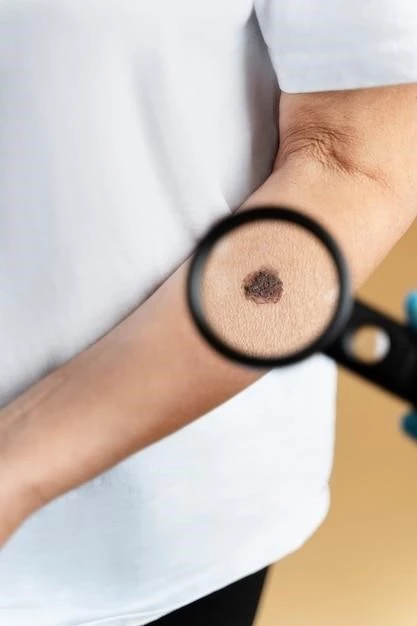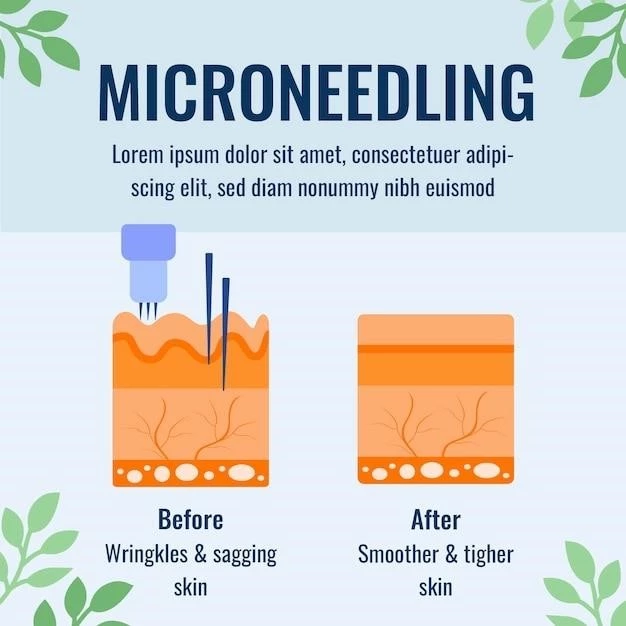Understanding Diffuse Palmoplantar Keratoderma‚ Bothnian Type
Welcome to the comprehensive guide on Diffuse Palmoplantar Keratoderma‚ Bothnian Type. In this article‚ you will find valuable insights into this genetic disease affecting the skin. Stay tuned to delve into the symptoms‚ diagnosis‚ treatment options‚ ongoing research‚ and key takeaways!
Overview of the Disorder
Diffuse Palmoplantar Keratoderma‚ Bothnian Type‚ is a rare inherited disorder characterized by thickening of the skin on the palms of the hands and the soles of the feet. This condition leads to hyperkeratosis‚ causing the skin to become thick‚ rough‚ and callused. Individuals with this genetic disease may experience excessive sweating on their palms‚ further complicating the symptoms.
It is crucial to understand the impact of this skin condition on daily life‚ as the thickened skin can lead to discomfort‚ pain‚ and difficulties in performing manual tasks. Managing this disorder requires a comprehensive approach that considers both the physical and psychological well-being of the affected individuals.
Genetic mutations play a key role in the development of Diffuse Palmoplantar Keratoderma‚ Bothnian Type. Researchers continue to explore the underlying genetic mechanisms to enhance diagnosis and treatment strategies. By educating yourself about this disorder‚ you can better navigate its challenges and explore appropriate interventions for symptom relief and management.
Symptoms and Diagnosis
The symptoms of Diffuse Palmoplantar Keratoderma‚ Bothnian Type typically manifest as thickened‚ rough skin on the palms and soles. Individuals may also experience sweaty palms‚ which can exacerbate the thickening of the skin and lead to discomfort. The development of calluses is common in affected areas‚ impacting daily activities that involve manual dexterity.
Diagnosing this genetic disease involves a thorough examination by a dermatologist or healthcare provider. Clinical assessment of the skin’s texture‚ appearance‚ and the presence of calluses is critical for accurate diagnosis. In some cases‚ genetic testing may be necessary to identify specific mutations associated with the Bothnian Type of Palmoplantar Keratoderma.
If you or a loved one exhibit persistent symptoms such as thickened skin on the palms and soles‚ sweating abnormalities‚ or discomfort when performing manual tasks‚ seeking medical attention is advisable. An early and accurate diagnosis can facilitate the implementation of appropriate treatment strategies and improve the overall management of the disorder.
Understanding the Bothnian Type
The Bothnian Type of Diffuse Palmoplantar Keratoderma is a specific form of this genetic disorder primarily found in the population near the Bothnian Sea. It is characterized by diffuse thickening of the palms and soles‚ leading to pronounced calluses and rough‚ scaly skin texture. Sweaty palms are a common feature of this subtype‚ further complicating the symptoms experienced by individuals.
Understanding the Bothnian Type involves recognizing its distinct clinical presentation compared to other forms of Palmoplantar Keratoderma. Individuals with this subtype may face unique challenges related to the severity of skin thickening‚ management of calluses‚ and coping with excessive sweating on the palms. Genetic studies have shown specific mutations associated with the Bothnian Type‚ offering insights into its underlying mechanisms.
By familiarizing yourself with the characteristics of the Bothnian Type‚ you can better navigate the symptoms and challenges posed by this subtype of Diffuse Palmoplantar Keratoderma. Consulting with dermatologists or healthcare professionals experienced in treating genetic skin disorders can provide valuable guidance on management strategies tailored to the Bothnian Type.
Treatment Options and Management
Managing Diffuse Palmoplantar Keratoderma‚ Bothnian Type involves a multidisciplinary approach aimed at addressing the symptoms and improving the quality of life for affected individuals. Treatment options may include regular use of emollients and moisturizers to soften the thickened skin and reduce discomfort. Topical keratolytic agents can help in exfoliating the excess skin layers‚ promoting smoother skin texture.
In cases where excessive sweating on the palms poses a challenge‚ antiperspirants or botulinum toxin injections may be considered to manage sweating symptoms. Customized orthotics or padding can assist in relieving pressure on callused areas‚ enhancing comfort during daily activities. Regular follow-up appointments with dermatologists are essential to monitor skin health and adjust treatment strategies as needed.
Research into novel therapies for Diffuse Palmoplantar Keratoderma‚ including the Bothnian Type‚ continues to explore potential targeted treatments to address the underlying genetic factors contributing to the disorder. Clinical trials and genetic studies offer promising avenues for the development of more effective management strategies in the future.
By staying informed about the latest advancements in dermatological research and collaborating with healthcare providers specializing in skin conditions‚ individuals with the Bothnian Type can access tailored treatment approaches that consider the unique characteristics of this subtype. Embracing a proactive approach to skin health management is key to enhancing well-being and mitigating the impact of Diffuse Palmoplantar Keratoderma.
Ongoing Research and Future Prospects
Researchers are actively engaged in studying Diffuse Palmoplantar Keratoderma‚ Bothnian Type‚ to advance our understanding of this rare genetic disease. Ongoing research aims to elucidate the specific genetic mutations contributing to the Bothnian Type‚ leading to the development of more targeted treatment options.
Exploring innovative therapies‚ including gene therapy and molecular interventions‚ offers promising prospects for individuals affected by the Bothnian Type. By investigating the molecular pathways involved in skin thickening and hyperkeratosis‚ scientists strive to identify novel drug targets that could revolutionize the management of this subtype of Palmoplantar Keratoderma.
Collaborations between dermatologists‚ geneticists‚ and pharmaceutical companies are essential for translating research findings into practical therapies that can improve the quality of life for those living with Diffuse Palmoplantar Keratoderma. Clinical trials play a vital role in evaluating the safety and efficacy of emerging treatments‚ paving the way for future therapeutic breakthroughs.
As ongoing research continues to shed light on the pathogenesis of the Bothnian Type‚ individuals and families affected by this genetic disorder can remain hopeful about the prospects of more personalized and effective treatment options in the near future. Staying informed about the latest research outcomes and engaging with healthcare providers specializing in genetic skin conditions can empower individuals to actively participate in their treatment journey.
Conclusion and Key Takeaways
In conclusion‚ understanding Diffuse Palmoplantar Keratoderma‚ especially the Bothnian Type‚ requires awareness of its genetic basis‚ symptoms‚ and management strategies. Individuals living with this rare inherited disorder can benefit from a holistic approach to skin care and treatment‚ involving dermatologists‚ genetic counselors‚ and supportive healthcare professionals.
Key takeaways include the importance of early diagnosis‚ symptom management through topical treatments and sweat-reducing options‚ and ongoing monitoring of skin health. Embracing a proactive stance towards skin health can enhance the quality of life for individuals with the Bothnian Type‚ empowering them to navigate the challenges posed by this condition with confidence.
As research into genetic skin disorders advances‚ the future holds promise for more targeted therapies and personalized interventions tailored to the specific characteristics of the Bothnian Type. By staying engaged with healthcare providers and staying informed about the latest developments in dermatology‚ individuals can actively participate in their care and contribute to the collective understanding of Diffuse Palmoplantar Keratoderma.
Remember‚ seeking support from specialists‚ staying vigilant about skin changes‚ and participating in clinical research efforts can all play a pivotal role in shaping the management and treatment landscape for the Bothnian Type and other forms of Palmoplantar Keratoderma. Together‚ we can work towards improved outcomes and enhanced quality of life for those impacted by this rare genetic skin condition.

